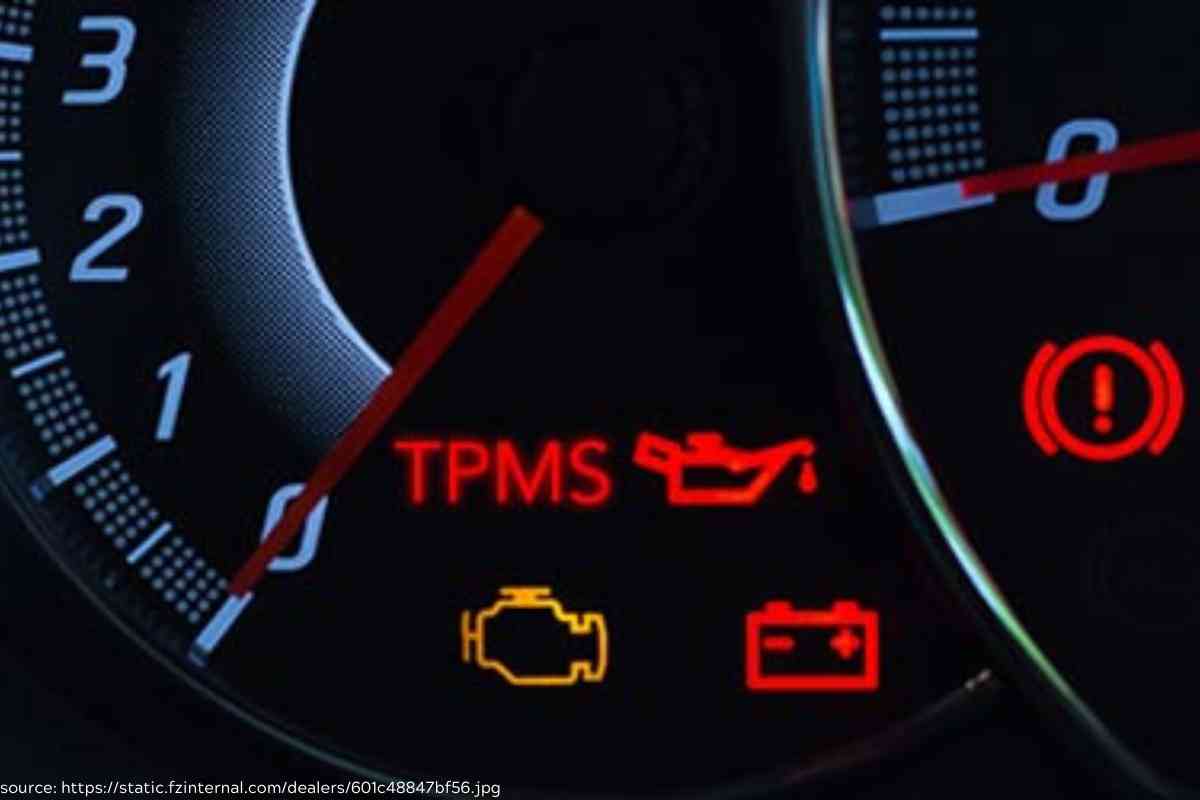How to Reset Low Tire Pressure Light on Honda CRV: Step-by-Step Guide
If you own a Honda CR-V, you may have noticed the low tire pressure warning light on your dashboard. This warning light indicates that one or more of your tires is underinflated, which can be dangerous and negatively affect your vehicle’s performance. Fortunately, resetting the low tire pressure light on your Honda CR-V is a straightforward process that can be done in just a few steps.

How do you reset the low tire pressure light on a Honda CR-V?
To reset the low tire pressure warning light on your Honda CR-V, you can use the TPMS calibration feature in the vehicle’s settings menu. This feature allows you to recalibrate the tire pressure monitoring system and initialize the pressure sensors to the correct values. To access the TPMS calibration feature, you can use the touchscreen display or the steering wheel buttons, depending on the model of your Honda CR-V.
It is important to note that resetting the low tire pressure warning light on your Honda CR-V should not be used as a substitute for regularly checking your tire pressure. Inadequate tire pressure can cause uneven wear, poor handling, and even accidents.
It is recommended to check your tire pressure at least once a month and to inflate your tires to the recommended pressure levels listed in your owner’s manual. If you are unsure how to check your tire pressure or have any concerns about your vehicle’s performance, it is always best to consult a dealer or professional mechanic.
If you’re having issues with your Honda CR-V, you’re not alone. Check out our guide to the most common problems with Honda CR-Vs and which models are most prone to issues.
Understanding the TPMS Light
The TPMS (Tire Pressure Monitoring System) is a safety feature that is present in most modern vehicles, including the Honda CR-V fifth generation.
The TPMS light on the dashboard is an important indicator that alerts the driver when the tire pressure is low. It is crucial to understand the TPMS light and its functions to ensure safe driving.
What is the TPMS Light?
The TPMS light is a warning light that appears on the dashboard when the tire pressure is low. It is usually shaped like a horseshoe with an exclamation mark in the middle.
The TPMS light is a signal to the driver that one or more of the tires have low pressure. The light may also indicate other issues, such as a malfunctioning sensor or a damaged tire.
Why is the TPMS Light Important?

The TPMS light is important because it alerts the driver when the tire pressure is low. Driving with low tire pressure can be dangerous and can lead to accidents.
Low tire pressure can also cause tire wear and tear, reducing the tire’s lifespan. The TPMS light is an essential safety feature that helps prevent accidents and ensures the vehicle’s optimal performance.
🔔 Be The Smartest Automotive Enthusiast In Your Friend Group!
Twice per week you will get the latest automotive news making you the smartest and most informed automotive enthusiast in just 5 minutes.
Join 3.000+ Subscribers to Four Wheel Trends, FREE!
What to Do When the TPMS Light Comes On?
When the TPMS light comes on, it is essential to check the tire pressure immediately. Use a tire pressure gauge to check the pressure in each tire and inflate the tires to the recommended pressure. If the TPMS light continues to stay on, it may indicate a malfunctioning sensor or a damaged tire. In such cases, it is recommended to take the vehicle to a certified mechanic for inspection.
In conclusion, understanding the TPMS light is crucial for safe driving. The TPMS light alerts the driver when the tire pressure is low, preventing accidents and ensuring optimal vehicle performance. When the TPMS light comes on, it is essential to check the tire pressure immediately and take necessary actions to avoid any potential risks.
Checking Honda CR-V Tire Pressure
Maintaining proper tire pressure is essential for ensuring the safety and longevity of your tires, as well as improving fuel efficiency. Checking tire pressure regularly is an important part of routine vehicle maintenance, and it’s easy to do.
To check your tire pressure, you’ll need a tire pressure gauge and access to a gas station or other location with an air compressor. Here’s how to do it:

- First, make sure your vehicle is parked on level ground and the tires are cool (not hot from driving).
- Locate the tire pressure information label on the driver’s side door jamb or in the owner’s manual. This label will tell you the recommended tire pressure for your vehicle.
- Unscrew the valve cap from the tire you want to check.
- Press the tire pressure gauge onto the valve stem and hold it firmly in place until the gauge reads the tire pressure.
- Compare the reading on the gauge to the recommended tire pressure for your vehicle. If the tire pressure is too low, add air until it reaches the recommended level. If it’s too high, release air until it reaches the recommended level.
- Repeat the process for each tire, including the spare tire.
It’s important to check tire pressure regularly, as tires can lose pressure over time or due to changes in temperature. Aim to check your tire pressure at least once a month, and always before long trips.
In addition to checking tire pressure, it’s also important to inspect your tires regularly for signs of wear or damage. Look for any cuts, punctures, bulges, or other abnormalities, and replace any tires that show signs of damage.
By regularly checking your tire pressure and inspecting your tires, you can help ensure the safety and longevity of your vehicle’s tires, as well as improve fuel efficiency and overall performance.
Resetting the TPMS Light
If you see a low tire pressure warning light on your Honda CR-V, it’s essential to reset it as soon as possible. This warning light indicates that one or more of your tires’ pressure is below the recommended level.
Driving with low tire pressure can lead to tire damage, poor fuel efficiency, and even accidents. In this section, we will discuss how to reset the TPMS light on a Honda CR-V.
Using the TPMS Button
One way to reset the TPMS light on a Honda CR-V is by using the TPMS button. Here are the steps:
- Make sure your vehicle is parked in a safe and level area.
- Turn on the ignition without starting the engine.
- Locate the TPMS button to the left of the steering column.
- Press and hold the TPMS button until the TPMS light blinks twice.
- Release the button, and the TPMS will begin to re-calibrate.
Using the Touchscreen Display
Another way to reset the TPMS light on a Honda CR-V is by using the touchscreen display. Here are the steps:
- Press the home button on the infotainment system (center display).
- Go to settings.
- Touch the vehicle button.
- Select TPMS calibration, which is the first option you will see.
- Finally, touch the calibrate button.
It’s essential to note that the TPMS light may take a few minutes to reset after following these steps. If the light does not go off after a few minutes, you may need to check the tire pressure again and ensure that all tires are at the recommended pressure level.
Resetting the TPMS light on a Honda CR-V is a straightforward process that can be done in a matter of minutes. By following the steps mentioned above, you can ensure that your vehicle is safe to drive and avoid any potential tire damage or accidents.

Calibrating the TPMS
Calibrating the TPMS (Tire Pressure Monitoring System) on your Honda CR-V is a simple process that can be done using either the steering wheel buttons or the touchscreen display. This section will guide you through both methods.
Using the Steering Wheel Buttons
To calibrate the TPMS using the steering wheel buttons, follow these steps:
- Make sure your Honda CR-V is parked and turned off.
- Turn the ignition to the ON position.
- Press and hold the TPMS button located to the left of the steering wheel until the TPMS indicator blinks twice.
- Drive your vehicle for at least 20 minutes at a speed of 50 mph or more.
- If the TPMS indicator comes on and stays on after driving for 20 minutes, check the tire pressure and adjust as necessary.
Using the Touchscreen Display
To calibrate the TPMS using the touchscreen display, follow these steps:
- Press the Home button on the infotainment system (center display).
- Go to Settings.
- Touch the Vehicle button.
- Select TPMS Calibration, the first option you will see.
- Touch the Calibrate button.
- Drive your vehicle for at least 20 minutes at a speed of 50 mph or more.
- If the TPMS indicator comes on and stays on after driving for 20 minutes, check the tire pressure and adjust as necessary.
It’s important to note that TPMS calibration should be done whenever you replace or rotate your tires, or if your tire pressure is significantly low. Calibration ensures that the TPMS is accurately monitoring your tire pressure and will alert you if it falls below the recommended level.
Calibrating the TPMS on your Honda CR-V is a simple process that can be done using either the steering wheel buttons or the touchscreen display. By following these steps, you can ensure that your TPMS is accurately monitoring your tire pressure and keeping you safe on the road.
Customizing TPMS Settings
The TPMS (Tire Pressure Monitoring System) on your Honda CR-V can be customized to suit your preferences. You can adjust the settings to change the pressure threshold at which the system alerts you to low tire pressure or to turn off the TPMS altogether. Here’s how to customize your TPMS settings:
Using the Information Display
- Press the “Home” button on the infotainment system.
- Select “Settings” on the touchscreen.
- Select “Vehicle.”
- Select “TPMS Calibration.”
- Choose “Calibrate.”
- Select “Initialize.”
- Select “Yes.”
Using the Owner’s Manual
You can also customize your TPMS settings using the owner’s manual. Here are the steps:
- Turn the ignition switch to the “On” position.
- Press the “Menu” button on the steering wheel until you see “Vehicle Settings” on the information display.
- Use the “+” or “-” button to select “TPMS Calibration.”
- Press “Enter.”
- Use the “+” or “-” button to select “Calibration.”
- Press “Enter.”
- Use the “+” or “-” button to select “Initialize.”
- Press “Enter.”
- Use the “+” or “-” button to select “Yes.”
- Press “Enter.”
TPMS Settings
Here are the TPMS settings you can customize:
- Pressure threshold: You can set the pressure threshold at which the TPMS alerts you to low tire pressure. The default setting is 29 psi.
- TPMS on/off: You can turn the TPMS on or off. Note that turning off the TPMS will disable the system and may affect your vehicle’s safety.
- Calibration: You can calibrate the TPMS to adjust for changes in tire pressure due to temperature or altitude.
It’s important to note that customizing your TPMS settings may affect your vehicle’s safety. Be sure to consult your owner’s manual and follow the manufacturer’s recommendations.
Conclusion
In conclusion, resetting the low tire pressure light in your Honda CR-V is an essential task that ensures your vehicle’s safety and performance. By following the steps provided in this article, you can easily reset the low tire pressure light and keep your tires in excellent condition.
Keep in mind that driving with low tire pressure can be dangerous and increase the risk of an accident. Therefore, it is crucial to regularly check your tire pressure and reset the low tire pressure light whenever necessary.
The tire pressure sensors in your Honda CR-V play a critical role in ensuring your safety on the road. These sensors monitor the air pressure in your tires and alert you if the pressure drops below the recommended level. By resetting the low tire pressure light, you can ensure that your sensors are functioning correctly and providing accurate readings.
In summary, resetting the low tire pressure light in your Honda CR-V is a simple process that can prevent potential accidents and ensure optimal driving performance. Regularly checking your tire pressure and resetting the low tire pressure light will help you maintain your vehicle’s safety and longevity.
